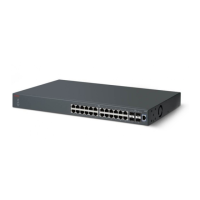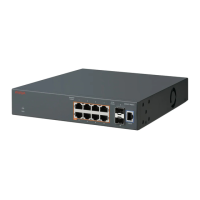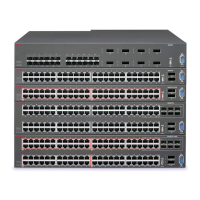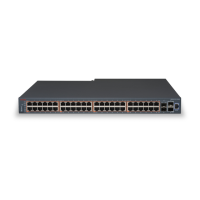10. In the ManualSyncRequest section, click the requestSync radio button to synchronize the
switch with the NTP server.
11. On the toolbar, click Apply.
Simple Network Time Protocol tab field descriptions
The following table describes the fields on the Simple Network Time Protocol tab.
Name Description
PrimaryServerAddressType Specifies the primary SNTP server IP address type.
Values include ipv4 and ipv6.
PrimaryServerAddress Specifies the IP address of the primary SNTP server.
SecondaryServerAddressType Specifies the secondary SNTP server IP address
type. Values include ipv4 and ipv6.
SecondaryServerAddress Specifies the IP address of the secondary SNTP
server.
State Specifies if the switch uses SNTP to synchronize the
switch clock to the Coordinated Universal Time
(UTC).
• disabled: the device cannot synchronize its clock
using SNTP
• enabled (unicast): the device synchronizes to
UTC shortly after start time when network access
becomes available, and periodically thereafter.
Important:
To clear the PrimaryServerAddress and
SecondaryServerAddress, you must first set the
State to disabled.
SyncInterval Specifies the frequency, in hours, that the device
attempts to synchronize with the SNTP servers.
Values range from 0 to 168. With a value of 0,
synchronization occurs only when the switch boots
up..
ManualSyncRequest Specifies that the device will immediately attempt to
synchronize with the SNTP servers.
LastSyncTime Indicates the Coordinated Universal Time (UTC)
when the device last synchronized with an SNTP
server. This is a read-only value.
LastSyncSourceInetAddressType Indicates the IP address type of the SNTP server
with which this device last synchronized. This is a
read-only value.
Table continues…
Configuring the switch using EDM
132 Getting Started with Avaya ERS 3500 Series July 2015
Comments on this document? infodev@avaya.com

